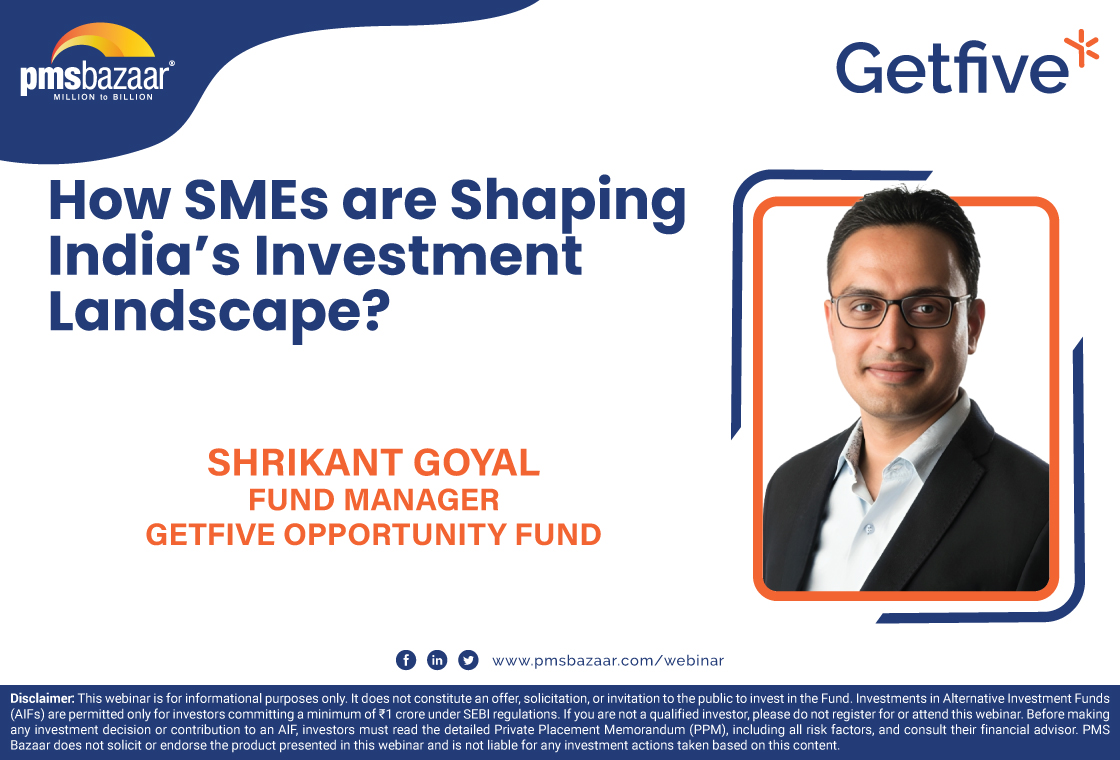Diversify with Multi-Asset PMS. A PMS that invests in a mix of asset classes including stocks, bonds, gold, and more, all managed by professional managers. They adjust the portfolio to weather market storms and aim for steady returns.

Multi-asset portfolio management services (PMS), as the name suggests, invest in a diversified mix of asset classes including equity, bonds, gold etc, to balance risk and return. This approach aims to create a portfolio that can withstand market fluctuations and deliver consistent returns over time. For example, debt assets may provide a good return when the equity market is low. Sometimes when both of these asset classes are on low, gold tends to do well.
Professional fund managers tailor the portfolio allocations-based market conditions, offering greater flexibility and control compared to traditional investments. To some large clients, these fund managers can tailor portfolios based on individual risk tolerance and market conditions as well.
Gaining popularity of multi-asset PMS – While multi-asset investing has been present in the market for centuries, it started to gain popularity globally after the financial crisis in 2008. Multi-asset PMS have started getting the attention of investors just as multi-asset mutual funds have become popular. Increased investor interest in managing volatility and the recent strong performance of these funds, especially during downturns, have contributed to their growing popularity. Stricter regulations have also given investors more confidence in these PMS options.
How do multi-asset PMS generate returns?
Multi-asset PMS generate returns by spreading investments across different asset classes, effectively diversifying the portfolio. This is one of the key benefits of multi-asset PMS. The approach helps derive risk-adjusted returns by not depending on one single asset class, providing safety.
That is by investing in a multi-asset fund, investors can gain exposure to a mix of stocks, bonds, commodities, and other assets (REITs), without the need to research and manage individual investments. This simplifies portfolio management and allows for professional management by experienced fund managers who can adjust the allocation based on market conditions, aiming to optimise returns and manage risk.
For example, a fund with 50% equity, 30% fixed income, and 20% gold can still deliver a positive return even if the stock market declines, due to the stability of bonds and the potential for gold to outshine during economic uncertainty.
Benchmark for multi-asset PMS
As per SEBI, multi-asset PMS is mandated to use the Nifty Multi-Asset Indices to benchmark the performances of these funds. These indices blend the performance of different asset classes, such as equity, debt, arbitrage, and REITs/InvITs, to reflect the performance of multi-asset portfolios.
For instance, there are two Nifty Multi-Asset Indices. One of them has Equity, Arbitrage, REITs/InvITs with 50% exposure to Nifty 500 (Equity), 40% exposure to Nifty 50 Arbitrage (Arbitrage) and 10% exposure to Nifty REITs & InvITs (REITs/InvITs) index.
Another Nifty Multi-Asset index has 50% exposure to Nifty 500 (Equity), 20% exposure to the Nifty Medium Duration Debt index (Debt), 20% exposure to Nifty 50 Arbitrage (Arbitrage) and 10% exposure to the Nifty REITs & InvITs (REITs/InvITs) index.
The PMSes can pick and choose any one index as their multi-asset index based on their allocation.
PMS multi-asset performance vs benchmark

There are 16 multi-asset PMSes within the PMSBazaar universe and the average returns across time frames have outperformed the benchmark indices.
Six-month performance
During the 6-month performance, all 16 multi-asset PMS approaches have beaten their respective benchmark indices. Here are the top 5 performers.

One-year performance
Even during the one-year performance, of the 15 investment approaches, 11 of them have outperformed their benchmark. Here are the top performers.
 Two-year performance
Two-year performance
While the average returns of 13 multi-asset PMS approaches were 21.97%, 11 of them have beaten benchmark indices. Here are the top performers.

Three-year top performers are as follows
 Takeaway
Takeaway
While multi-asset PMSes have performed and delivered better than the benchmark indices, investors should keep a few key points in mind.
Before investing, an investor should evaluate the underlying investment strategy of the PMS (multi-asset) in order to choose the right investment approach (strategy) as per the risk appetite, investment horizon and liquidity needs.
Also, the taxation of these funds varies and depends on the asset allocation for a particular scheme. Thus, before investing, an investor should understand the positioning of investments to gauge the tax liabilities.
That said, the main takeaway is that multi-asset PMS offers a compelling option for investors seeking a balanced approach to growing their wealth. By spreading investments across various asset classes, these funds can help reduce risk and achieve consistent returns over time.
Recent Blogs
.jpg)
Passively Active Investing — A Modern Investor’s Lens on ETF-Based PMS
PMS Bazaar recently organized a webinar titled “Passively Active Investing — A Modern Investor’s Lens on ETF-Based PMS,” which featured Mr. Karan Bhatia, Co-Founder and Co-Fund Manager , Pricebridge Honeycomb ETF PMs. This blog covers the important points shared in this insightful webinar.

Spot the Trouble: Red Flags in Equity Investment Analysis
PMS Bazaar recently organized a webinar titled “Spot the Trouble: Red Flags in Equity Investment Analysis,” which featured Mr. Arpit Shah, Co-Founder & Director, Care Portfolio Managers. This blog covers the important points shared in this insightful webinar.

Long-Only AIFs Rebound Sharply in October; Long-Short Strategies Lag Despite Lower Volatility
106 long-only AIFs averaged 3.68% vs 32 long-short AIFs at 2.7%; only 24–31% of funds beat key indices

Markets log strongest monthly gains in 7 months; PMS performance turns near-uniform in October
Nifty 50 TRI gained 4.62%, BSE 500 TRI rose 4.27%; 415 of 427 equity PMSes ended positive

How SMEs are Shaping India’s Investment Landscape?
PMS Bazaar recently organized a webinar titled “How SMEs are Shaping India’s Investment Landscape?” which featured Mr. Shrikant Goyal, Fund Manager, GetFive Opportunity Fund.

Stable Income from Indian REITs and InvITs
PMS Bazaar recently organized a webinar titled “Stable Income from Indian REITs and InvITs,” which featured Mr. Rahul Jain, Head of Public Markets, Alt.

5 Key Considerations Before Investing in AIFs in India
Alternative Investment Funds (AIFs) have emerged as a compelling option for sophisticated investors seeking diversification and potentially superior returns. But venturing into AIFs requires a clear understanding of their unique characteristics that go beyond simply knowing what they are and their categories.

How AIF can help in diversification?
Traditionally, Indian investors have relied on a mix of stocks and bonds to build their wealth. While this approach offers diversification, it can still leave your portfolio vulnerable to market fluctuations. Enter Alternative Investment Funds (AIFs), a dynamic asset class gaining traction for its ability to unlock diversification beyond the realm of conventional options.

